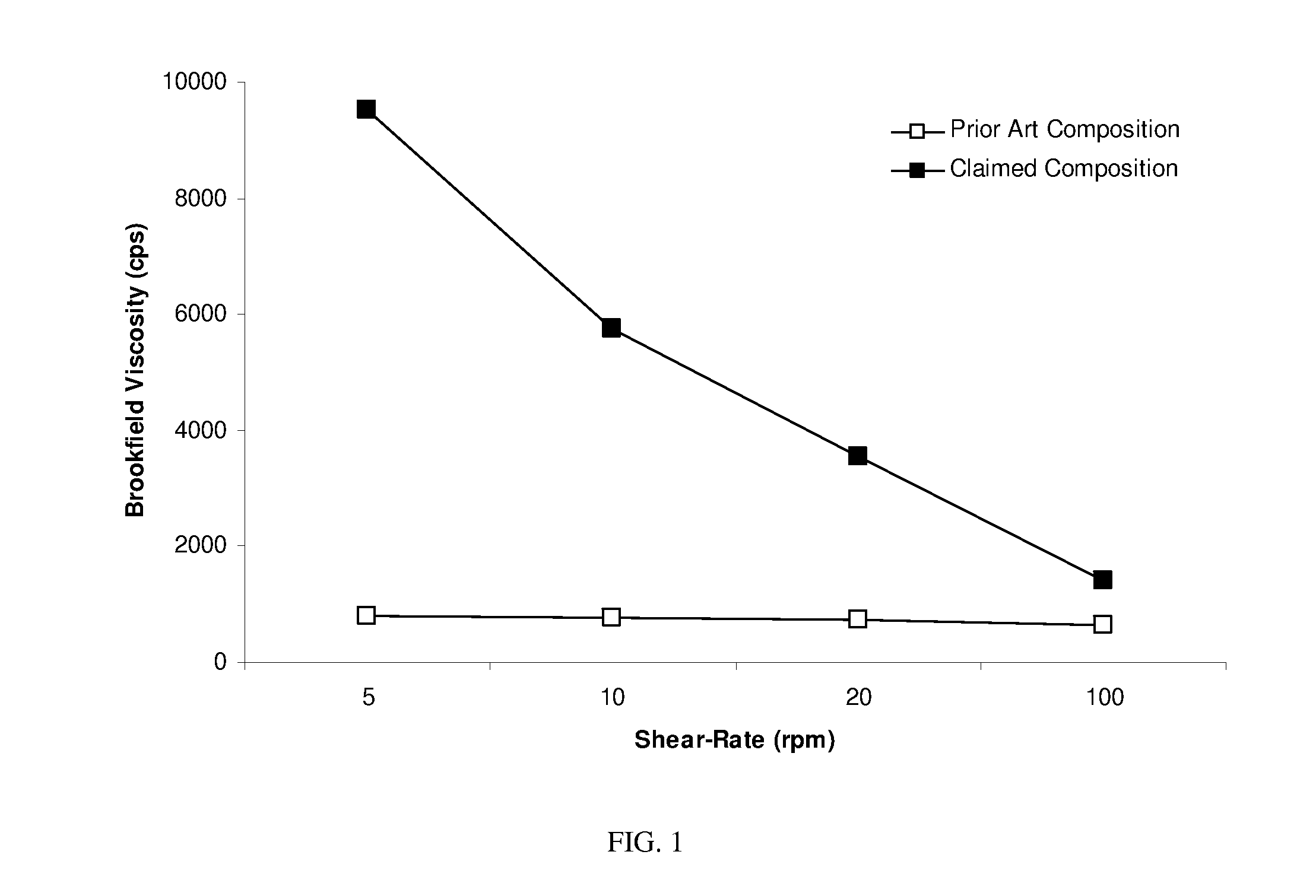Lignite-based urethane resins with enhanced suspension properties and foundry sand binder performance
a technology of lignite-based urethane resin and suspension properties, which is applied in the field of polymerizable resin binders, can solve the problems of short shelf life of prior art compositions, affecting the cost and quality of the resultant casting in a negative manner, and preventing the ready standardization
- Summary
- Abstract
- Description
- Claims
- Application Information
AI Technical Summary
Problems solved by technology
Method used
Image
Examples
example 1
[0040]A high-shear, rotor-stator homogenizer (Silverson Homogenizer) was charged with a 70° C. mixture of 194.63 g of triethylene glycol (TEG) and 1.8 g of polyethylene glycol-100 stearate (PEG-100 stearate). While mixing the solution at 70° C., 95.46 g of lignite powder, having a moisture-content of 5.72 wt. %, was added over the course of about 5 min. The resulting suspension was continuously mixed for about 20 minutes at 6,000 rpm then 8.11 g of polyethylene glycol-150 (PEG-150), pre-heated to 70° C., was added to the suspension, and then the suspension was mixed for an additional 10 minutes at 6,000 rpm. The batch was then cooled to ambient temperature, while under agitation in a Caframo-type mixer fitted with a paddle agitator operating at 1,500 rpm.
example 2
[0042]A mixture of 194.11 g of TEG and 1.8 g of PEG-100 stearate was heated to 70° C. then mixed, using a high-shear, rotor-stator homogenizer (Silverson Homogenizer). Then 96 g of lignite powder, having a moisture-content of 6.25 wt. %, was added over the course of about 5 min while mixing at 70° C. The resulting sample was continuously mixed for about 20 minutes at 10,000 rpm, then 8.09 g of PEG-150, pre-heated to 70° C., was added to the sample. The sample was then mixed for an additional 10 minutes at 10,000 rpm. The batch was then cooled to ambient temperature, while under agitation in a Caframo-type mixer fitted with a paddle agitator operating at 1,500 rpm.
example 3
[0044]In Example 3, the lignite particle size was such that 65% by weight of the lignite particles passing through a 200-mesh screen. A mixture of 195.51 g of TEG and 1.8 g of PEG-100 stearate was heated to 70° C. then mixed, using a high-shear, rotor-stator homogenizer (Silverson Homogenizer). Then 94.54 g of lignite powder, having a moisture-content of 4.8 wt. %, was added over the course of about 5 min while mixing at 70° C. The resulting sample was continuously mixed for about 20 minutes at 10,000 rpm, then 8.15 g of PEG-150, pre-heated to 70° C., was added to the sample. The sample was then mixed for an additional 10 minutes at 10,000 rpm. The batch was then cooled to ambient temperature, while under agitation in a Caframo-type mixer fitted with a paddle agitator operating at 1,500 rpm.
PUM
| Property | Measurement | Unit |
|---|---|---|
| Temperature | aaaaa | aaaaa |
| Fraction | aaaaa | aaaaa |
| Fraction | aaaaa | aaaaa |
Abstract
Description
Claims
Application Information
 Login to View More
Login to View More - R&D
- Intellectual Property
- Life Sciences
- Materials
- Tech Scout
- Unparalleled Data Quality
- Higher Quality Content
- 60% Fewer Hallucinations
Browse by: Latest US Patents, China's latest patents, Technical Efficacy Thesaurus, Application Domain, Technology Topic, Popular Technical Reports.
© 2025 PatSnap. All rights reserved.Legal|Privacy policy|Modern Slavery Act Transparency Statement|Sitemap|About US| Contact US: help@patsnap.com



